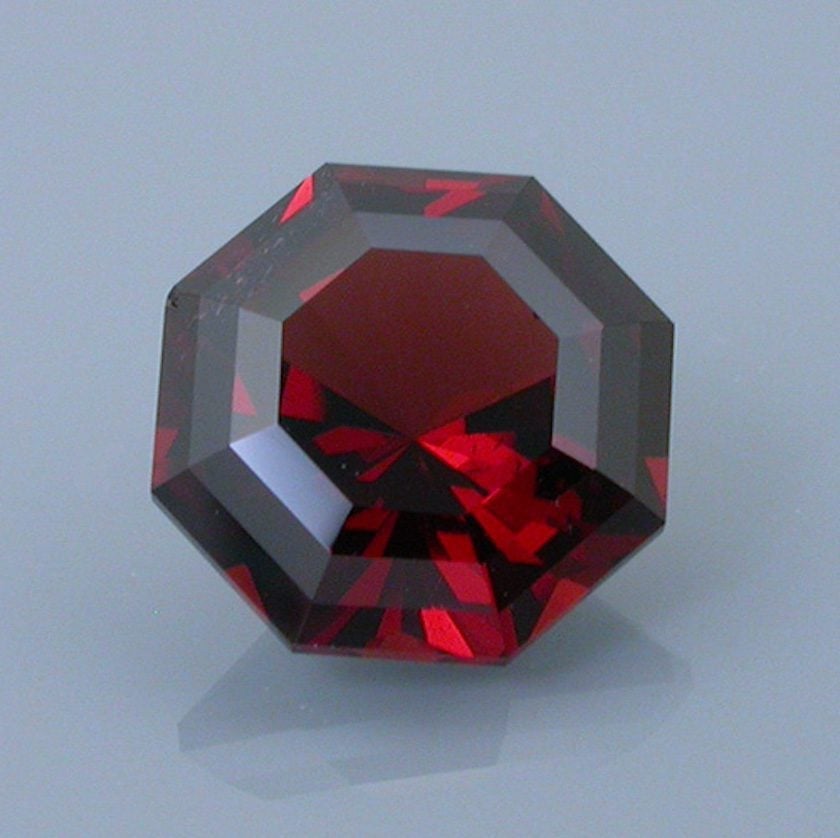Malaya or Malaia Garnet Value, Price, and Jewelry Information
Malaia or malaya garnets are typically light to dark, slightly pinkish orange, reddish orange, or yellowish orange in color. This a popular but rare garnet variety.
2 Minute Read
Malaia or malaya garnets are typically light to dark, slightly pinkish orange, reddish orange, or yellowish orange in color. This a popular but rare garnet variety.
Start an IGS Membership today
for full access to our price guide (updated monthly).Malaia Garnet (Malaya Garnet) Value
Malaia garnet value increases as the tone lightens.
Although these gems were readily available in the 1970s, they have since become scarce, especially in large sizes.
For more information on quality and value factors for malaia garnets, consult our buying guide.
The Story Behind Malaia Garnet
Garnets are a complicated family. The story of malaia or malaya garnet illustrates this well. Discovered in the 1960s in the Umba Valley in Tanzania, these pink gems were called malaia, Swahili for "out of the family." Miners who were being paid to search for violet rhodolite literally set aside these finds. At that time, they didn't fit into any known garnet varieties.
When malaia garnets came to the attention of the gem world in the 1970s, however, the outcast quickly became quite popular and valuable. Since then, new discoveries have revealed these gems occur in a wider range of colors than the pink that initially garnered so much attention.
What is a Malaia Garnet?
Popularity notwithstanding, these rare gems remain complicated. Currently, the name has two different uses. It's a trade name for pyrope-spessartine garnets with light to slightly dark colors ranging from pink, pinkish orange, yellowish orange, orange, to red. It's also a variety of pyralspite (a blend of pyrope, almandine, and spessartite garnets) with a very wide range of possible mixtures. Malaia garnets may consist of 0-83% pyrope, 2-78% almandine, 2-94% spessartite, and 0-24% grossular, with no more than 4% andradite.
Does Malaia Garnet Make a Good Jewelry Stone?
With their high hardness, no cleavage, and excellent dispersion, malaia garnets are excellent stones for faceting and any type of jewelry use. For engagement ring design ideas, consult our garnet engagement ring guide.
Identifying Malaia Garnets
Some malaia garnets may change colors under incandescent and fluorescent light. When faceted, they may also show scintillating red flashes due to the presence of chromium or vanadium.
This gem's absorption spectrum and needle inclusions can also help distinguish them from other garnet varieties.
Are There Synthetic Malaias?
Malaia garnets aren't usually enhanced or synthesized.
Where are Malaias Found?
The Umba Valley in Tanzania, the first known source of malaia garnet, now rarely produces the material. The gemstone also occurs in Tunduro, Tanzania, as well as Kenya and Madagascar.
Stone Sizes
Stones larger than four carats are very rare.
Malaia Garnet Trade Names
Light peach and pinkish orange malaias are sometimes marketed as "Imperial garnets." Brownish, pinkish orange specimens from Madagascar with a high anomalous double refraction have been called "Imperial malaia garnet." Tan, beige specimens are marketed as "Champagne garnet."
How to Care for Malaia Garnet Jewelry
Despite malaia garnet's durability, take care when cleaning these gems and garnets in general. Inclusions may burst due to extreme heat or ultrasound and fracture the stone. Avoid mechanical cleaning systems and stick to a soft brush, mild detergent, and warm water, instead.
Consult our gemstone care guide and gemstone jewelry cleaning guide for more information.
Joel E. Arem, Ph.D., FGA
Dr. Joel E. Arem has more than 60 years of experience in the world of gems and minerals. After obtaining his Ph.D. in Mineralogy from Harvard University, he has published numerous books that are still among the most widely used references and guidebooks on crystals, gems and minerals in the world.
Co-founder and President of numerous organizations, Dr. Arem has enjoyed a lifelong career in mineralogy and gemology. He has been a Smithsonian scientist and Curator, a consultant to many well-known companies and institutions, and a prolific author and speaker. Although his main activities have been as a gem cutter and dealer, his focus has always been education. joelarem.com
Donald Clark, CSM IMG
Donald Clark, CSM founded the International Gem Society in 1998. Donald started in the gem and jewelry industry in 1976. He received his formal gemology training from the Gemological Institute of America (GIA) and the American Society of Gemcutters (ASG). The letters “CSM” after his name stood for Certified Supreme Master Gemcutter, a designation of Wykoff’s ASG which has often been referred to as the doctorate of gem cutting. The American Society of Gemcutters only had 54 people reach this level. Along with dozens of articles for leading trade magazines, Donald authored the book “Modern Faceting, the Easy Way.”
International Gem Society
Related Articles
Garnet Buying Guide
Malaya Garnet Buying Guide
Identifying Garnets Simplified
Black Diamond Value, Price, and Jewelry Information
Latest Articles
Brazilianite Value, Price, and Jewelry Information
Ruby-Glass Composites vs Leaded Glass Clarity Enhancements
Morganite Buying Guide
How Do Amethysts Form?
Never Stop Learning
When you join the IGS community, you get trusted diamond & gemstone information when you need it.
Get Gemology Insights
Get started with the International Gem Society’s free guide to gemstone identification. Join our weekly newsletter & get a free copy of the Gem ID Checklist!
